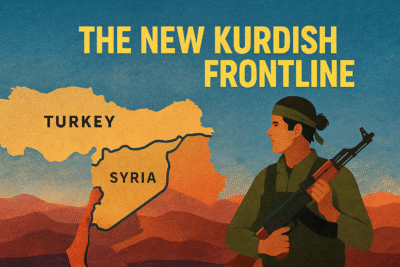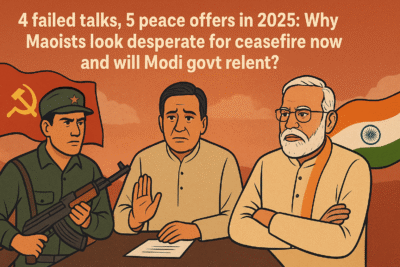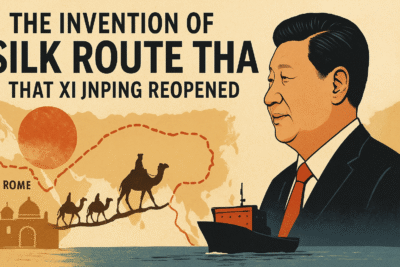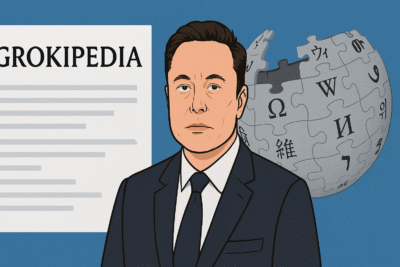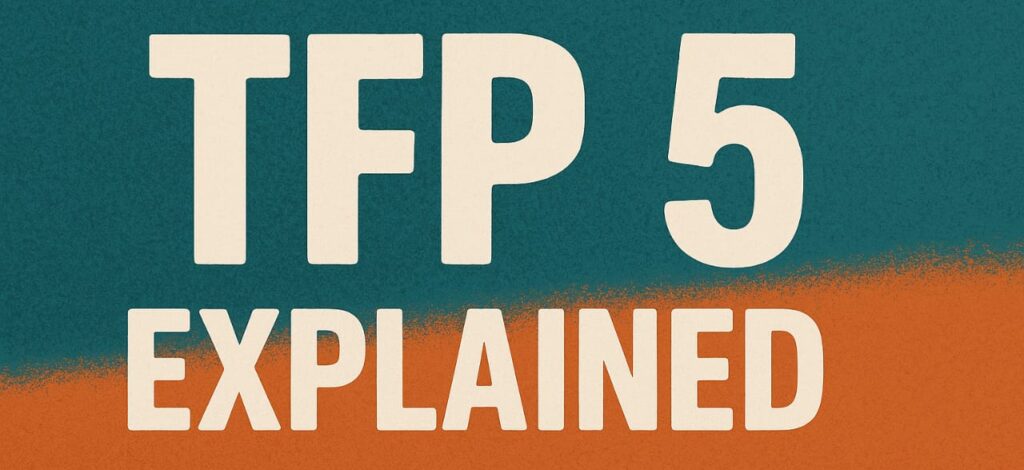
TFP 5 Explained
1.
Israel-Iran conflict: Attacks halt, ending 12-day war
Diplomatic breakthrough eases West Asia tensions, stabilising global oil markets
- What? A “complete and total” ceasefire has been declared between Israel and Iran, bringing an end to 12 days of intense military exchanges, including airstrikes and missile attacks that raised fears of a wider regional war.
- Who? The ceasefire was brokered by US President Donald Trump, with Israeli Prime Minister Benjamin Netanyahu and senior Iranian officials agreeing to halt hostilities.
- When? The agreement was announced on June 23 and took effect immediately.
- Where? The conflict primarily unfolded in Israel and Iran, with missile strikes affecting cities and military installations in both countries, and regional neighbours closely monitoring developments.
- Why? After sustained international diplomatic pressure and concern over escalating violence disrupting global energy supplies, both sides agreed to de-escalate to prevent further destruction.
- How? Through direct and mediated negotiations facilitated by the US administration, involving back-channel talks and coordinated communication between military and political leaders.
- So what? The ceasefire brings temporary relief to a volatile West Asia region, easing pressure on global oil markets critical to India’s energy needs. However, underlying tensions remain unresolved, and India must continue navigating complex geopolitical dynamics affecting its strategic and economic interests.
2.
Qatar intercepts majority of Iranian missiles in ‘surprise’ attack
Qatar’s missile defence thwarts Iran’s strike on US airbase, highlighting West Asia instability
- What? Qatar’s military successfully intercepted most of the missiles fired by Iran targeting the Al-Udeid US airbase, a key strategic facility hosting American and coalition forces.
- Who? The missile attack was launched by Iranian forces; Qatar’s air defence systems responded to protect the base.
- When? The attack occurred in the early hours of June 23.
- Where? Al-Udeid Airbase, located southwest of Doha, Qatar, serves as a major hub for US operations in West Asia.
- Why? The missile strike was part of escalating hostilities between Iran and US-backed forces in the region, reflecting ongoing tensions linked to broader West Asia conflicts.
- How? Qatar’s advanced missile defence systems, including Patriot and other surface-to-air missiles, intercepted all but one missile, which caused minor fires but no casualties or significant damage.
- So what? The attack underscores the fragile security environment in West Asia, with potential ripple effects on global energy markets and regional stability. For India, which imports a significant portion of its oil from the Gulf, such incidents pose risks to energy security and necessitate careful diplomatic balancing.
3.
India’s private sector activity hits 14-month high in June
Robust growth signals economic resilience amid global uncertainties
- What? India’s private sector recorded its strongest expansion in over a year during June 2025, with both manufacturing and services sectors showing significant growth.
- Who? The growth was driven by Indian private companies across multiple industries, as reported by the HSBC India Manufacturing and Services Purchasing Managers’ Index (PMI).
- When? The data pertains to June 2025, released on June 23.
- Where? The expansion was widespread across metropolitan and industrial hubs including Delhi, Mumbai, Bengaluru, and Chennai, with export demand from Asia, Europe, West Asia, and the Americas playing a key role.
- Why? Increased new orders, improved supply chain conditions, and greater investment in technology and workforce contributed to the growth.
- How? Companies responded by hiring more staff, expanding production capacity, and improving operational efficiency, while input cost inflation eased slightly, helping margins.
- So what? This robust private sector performance boosts confidence in India’s economic recovery and growth trajectory, reinforcing its position as a global manufacturing and export powerhouse amid global economic uncertainties.
4.
Srinagar police detain individuals for displaying foreign flags
Security concerns rise as symbolic acts stir tensions in Jammu and Kashmir
- What? Two men were detained by Srinagar police for publicly displaying foreign flags, including those of the US and Israel, in the Balhama area.
- Who? The suspects are local residents; the Srinagar police took swift action following public and intelligence reports.
- When? The incident occurred during the night of 23 June 2025.
- Where? Balhama, a neighbourhood in Srinagar, Jammu and Kashmir, an area sensitive due to ongoing security challenges.
- Why? Authorities believe the flag display was intended to provoke unrest and disturb public peace amid heightened political tensions in the region.
- How? Police used CCTV footage, eyewitness accounts, and intelligence inputs to identify and detain the individuals for questioning.
- So what? This episode highlights the fragile security situation in Kashmir, where symbolic gestures can rapidly escalate tensions. It underscores the challenges Indian authorities face in maintaining law and order in a politically sensitive environment.
5.
Air India CEO faces backlash over post-crash remarks
Communication missteps deepen crisis after tragic Air India crash
- What? Air India CEO Campbell Wilson has come under fire for a video message issued after the AI 171 crash, with critics accusing him of insensitivity and plagiarism.
- Who? Campbell Wilson, CEO of Air India, is at the centre of the controversy; social media users, aviation experts, and communications professionals have voiced concerns.
- When? The message was released shortly after the crash on June 12; criticism intensified throughout June.
- Where? The message circulated widely across India and international media platforms.
- Why? Wilson’s remarks bore striking similarity to a speech by American Airlines’ CEO following a previous crash, leading to accusations of copying and a perceived lack of genuine empathy for victims’ families.
- How? The issue gained traction through social media comparisons and expert commentary analysing the tone and content of the message.
- So what? The backlash highlights the critical importance of sensitive and original communication in crisis management. For Air India, this controversy complicates efforts to rebuild trust and manage public relations during a period of intense scrutiny.
